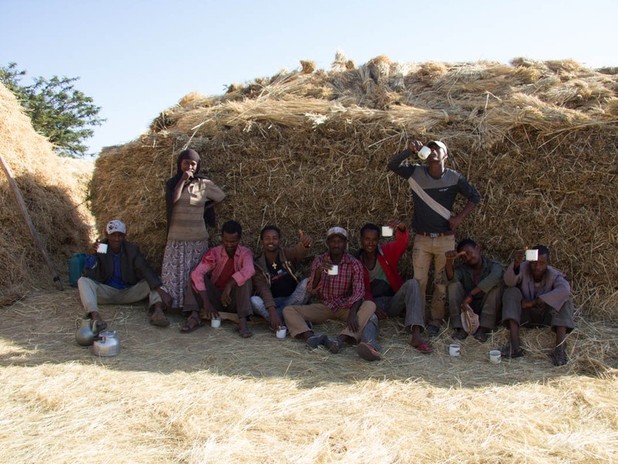January 28, 2014
Recently back from a trip to Ethiopia, where his design team is working on a device to better plant teff seeds, Global Fellow Behrouz Hariri uses pictures to reflect on his time in the field, the challenges this project presents, and some of the best food he’s ever eaten.






On teff:
One interesting way we heard the problem of teff planting phrased is that “teff is an Ethiopian problem because no one else plants as much as we do.” There is lots of pride in teff and agronomists see improving teff yields as a national challenge. The difficulty with teff is that unlike rice and other crops, where China and other countries have developed machines that can be purchased or modified, not a whole lot of sophisticated machines exist for planting and processing teff.
On the farmers we met:
Farmers everywhere were super hospitable. We dropped in on people's familes, and they fed us, they gave us coffee, and everyone was really proud to show us their land. It was threshing season and there were piles of teff everywhere. You crush the whole thing under the hooves of oxen or mules, then cover the floor with cow dung because you don’t want the seeds to mix with dust. So you have cows walking in circles across your crop.
A lot of teff goes missing in the traditional threshing process, as you might imagine. By mechanizing the threshing farmers could save another 30-40% of their harvests. We came across a group of farmers who are adopting mechanized threshers and talked to them about the benefits they have experienced. Most farmers rent out the the machine once they have threshed their own crops. In addition to the practical benefits, there is large demand for mechanized threshers because they are a modern tool.
On behavior adoption:
The noted agronomist Dr. Marco Quinones told us, “farmers are economists, know that and you’ll be good.” If the cost-benefit of a new idea doesn’t add up, like any good businessman, farmers won’t try it. When we tried to abstract our ideas, they wanted numbers. Number of hours in the field, number of people needed to do the work, number of oxen necessary. They’re deeply practical.
In this picture we are asking local farmer and inventor Fituma to help us prioritize qualities of a planter.
On Ethiopian culture:
As always food is a big part of cultural pride. You continually get asked if you like the food. Once they know you’re new, Ethiopians ask if you’ve had injera bread, which is made of teff! We ate more vegetarian Ethiopian food there than I’ve had in North America. There you have two days of fasting per week, which means no meat. Coffee is very serious, coffee culture is everywhere you go. I had it in the traditional serving brewed over coals. You consume it with lots of sugar. You can see a traditional coffee set in this picture taken in a village south of Addis.

